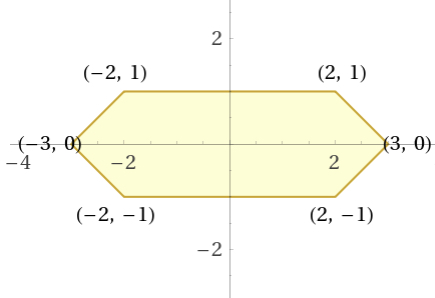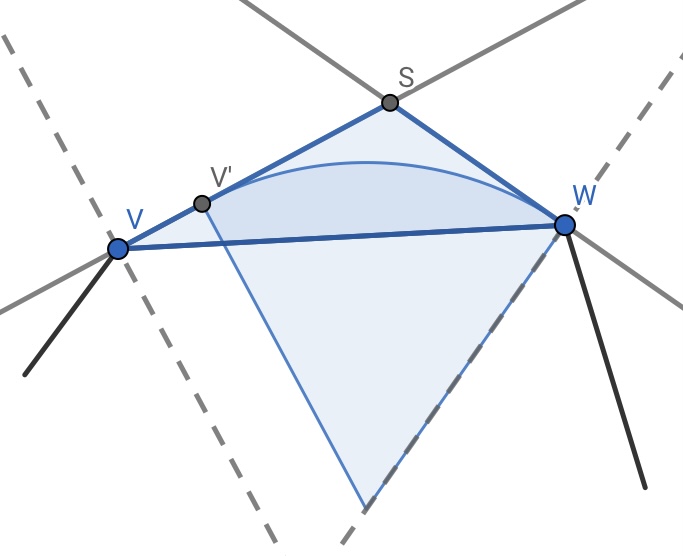Here is one limit on the curvature needed. It is not optimal, but it is explicit, and probably a good starting point for numerical or theoretical optimization.
Proposition: Consider the convex hull of the vertices as a polygon; then there is a path through the vertices with curvature of at most $$\max_i \frac{1+\cos(t_i+u_i)}{s_i\cos(\max(t_i,u_i))}$$ where $s_i$ is the length of the side and $t_i$, $u_i$ are half the angles at its vertices.
The path will go through each vertex in a direction perpendicular to the angle bisector at that vertex.
Proof: For consecutive vertices $V,W$, take their angle bisectors, and let the perpendiculars to those bisectors intersect at $S$.
Let triangle $SVW$ have side lengths $s,v,w$ and assume wlog that $v\le w$. Let $V’$ be the point on $SV$ with $VV’=w-v$.
Then our path will go through the line segment $VV’$, and a circular arc through $V’$ and $W$ which is tangent to $SV$ and $SW$. Since this section of path is perpendicular to the angular bisector at each vertex, it will have the same direction at each vertex as the path from the other side, and our final construction can combine these path sections for all sides.
If $t$ and $u$ are the angles between the convex hull and the respective angle bisectors at $V$ and $W$, then the angle at $S$ is $t+u$. So the radius of the circle arc is $v\tan(\frac{t+u}2)$ and by the law of sines this is $$\frac{s \cos t}{\sin(t+u)}\ \tan(\frac{t+u}2)$$ We can rewrite $t$ as $\max(t,u)$ because $v\le w$, and rewrite $\tan(\frac{t+u}2)/\sin(t+u)$ as $1/(1+\cos(t+u))$. Then inverting the rewritten radius gives the original expression in the formula for the curvature. $\square$
Example:
[ ]
]
Let the vertices be $(\pm2,\pm1)$ and $(\pm3,0)$. Then each side length is $\sqrt{2}$ or $4$, and each vertex half-angle is $\pi/4$ or $3\pi/8$. So the curvature is $$\max(\frac{1+\cos(\frac{5\pi}8)}{\sqrt{2}\cos(\frac{3\pi}8)}, \frac{1+\cos(\frac{3\pi}4)}{4\cos(\frac{3\pi}8)}) $$ which gives $\sim1.14$.
The apparent minimum possible maximum curvature for this example is $1$, achieved by the union of two vertical semicircles and two horizontal lines.

